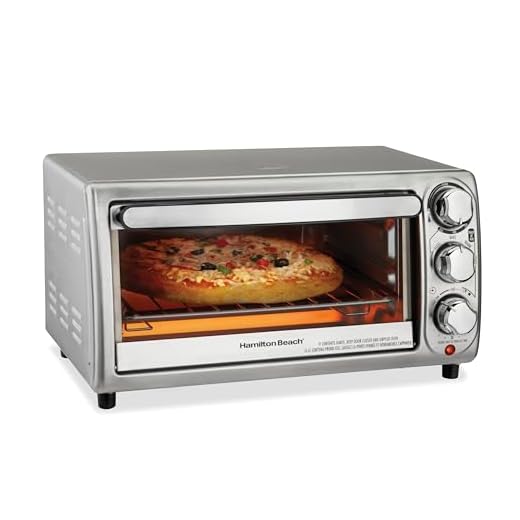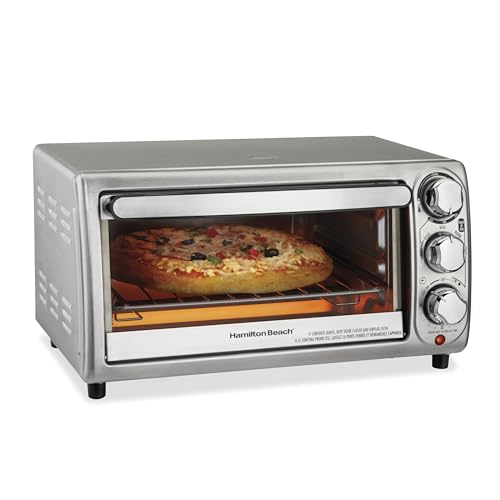



If you’ve ever used a toaster oven, you may have wondered how it works. Toaster ovens are a convenient and versatile kitchen appliance that can be used to bake, broil, and toast a variety of foods. They work by using a combination of heating elements and a thermostat to regulate the temperature.
Heating Elements: Toaster ovens typically have two heating elements – one on the top and one on the bottom. These elements are made of metal and are designed to generate heat when electricity passes through them. The top and bottom heating elements can be used independently or together, allowing for different cooking methods.
Thermostat: The toaster oven’s thermostat is responsible for maintaining the desired temperature inside the oven. When you set the temperature knob, the thermostat activates the heating elements to reach and maintain the specified temperature. Once the temperature is reached, the thermostat cycles the heating elements on and off to keep the oven at a consistent temperature.
How Toaster Ovens Work: A Comprehensive Guide
Toaster ovens are versatile kitchen appliances that can be used for a variety of cooking tasks, from toasting bread to baking cookies. Understanding how toaster ovens work can help you make the most of this handy appliance.
Basic Components of a Toaster Oven
A typical toaster oven consists of heating elements, a thermostat, a timer, and a removable tray. The heating elements are responsible for generating the heat needed for cooking, while the thermostat regulates the temperature. The timer is used to set the cooking duration, and the removable tray is where the food is placed for cooking.
How Toaster Ovens Heat Food
When you turn on a toaster oven and set the desired temperature, the heating elements begin to warm up. Once the oven reaches the set temperature, the thermostat maintains it by turning the heating elements on and off as needed. This consistent heat allows the food to cook evenly.
Additionally, toaster ovens often use convection technology, which employs a fan to circulate hot air around the food. This helps to cook the food more quickly and consistently, making it a popular feature in many modern toaster ovens.
Toaster Oven Cooking Modes
Many toaster ovens come with different cooking modes, such as bake, broil, toast, and convection. Each mode is designed to provide the optimal cooking environment for a specific type of food. For example, the bake mode is ideal for making cakes and casseroles, while the broil mode is great for browning and crisping foods.
| Cooking Mode | Ideal For |
|---|---|
| Bake | Cakes, Casseroles |
| Broil | Browning, Crisping |
| Toast | Bread, Bagels |
| Convection | Faster, Even Cooking |
Understanding how toaster ovens work and how to use their different modes can help you become a more efficient and creative cook in the kitchen.
What is a Toaster Oven?
A toaster oven is a small kitchen appliance that combines the functions of a traditional toaster and an oven. It is designed to be a versatile and convenient tool for cooking and toasting a wide variety of foods. Toaster ovens typically come with adjustable temperature settings and various cooking modes, allowing users to bake, broil, toast, and reheat food items. They are suitable for cooking small portions and are often used as a space-saving alternative to traditional ovens. With their compact size and versatility, toaster ovens have become a popular addition to many modern kitchens.
Basic Principles of Toaster Oven Operation
Toaster ovens work by using heating elements, typically made of metal, to generate heat. This heat is then spread throughout the oven cavity using a fan, ensuring even cooking. The temperature can be adjusted using a thermostat, allowing for precise control of the cooking process.
When the toaster oven is turned on, the heating elements heat up quickly, allowing for fast preheating. The selected cooking mode, such as bake, broil, or toast, determines which heating elements are used and for how long, providing flexibility in cooking different types of food.
Additionally, toaster ovens often have a timer that turns off the heating elements once the set time has elapsed, providing a convenient way to prevent overcooking. The combination of heating elements, fan-forced heat distribution, precise temperature control, and timer functionality makes toaster ovens versatile and efficient kitchen appliances.
Heating Elements in Toaster Ovens
Toaster ovens utilize heating elements to generate the required heat for cooking. These heating elements are usually made of metal, such as nickel-chromium, and are located either at the top, bottom, or both inside the toaster oven. The heating elements work by converting electrical energy into heat energy through a process called resistive heating. When the toaster oven is turned on, electricity flows through the heating elements, causing them to heat up and radiate the heat to the food inside the oven.
Some toaster ovens also have quartz heating elements, which heat up more quickly and have a more rapid response time compared to traditional metal elements. This allows for faster preheating and cooking times. Additionally, toaster ovens with quartz heating elements are more energy-efficient, as they require less time to reach the desired cooking temperature.
Temperature Control and Settings
Toaster ovens come with various temperature control settings to accommodate different types of food and cooking methods. Many toaster ovens offer a wide range of temperature options, usually between 150°F and 500°F, allowing users to select the precise temperature needed for their cooking needs.
Additionally, toaster ovens may have different cooking settings such as bake, broil, toast, and convection. These settings control the heating elements and airflow within the oven to achieve the desired cooking results.
Some toaster ovens also feature a timer function, allowing users to set a specific cooking time to prevent overcooking or burning of their food.
Functions and Uses of Toaster Ovens
Toaster ovens serve a variety of functions and have a range of uses, making them a versatile addition to any kitchen.
1. Toasting: Just as their name suggests, toaster ovens excel at toasting bread, bagels, and English muffins to a perfect golden brown.
2. Baking: These ovens can handle baking tasks such as cookies, muffins, and even small cakes, making them a convenient alternative to a full-size oven.
3. Broiling: Toaster ovens can broil meats and vegetables, providing a quick and efficient way to cook a variety of foods.
4. Reheating: They are an excellent option for reheating leftovers, providing more even heating than a microwave.
5. Cooking small meals: Toaster ovens can be used to cook smaller meals, such as personal pizzas, roasted vegetables, and even small casseroles.
6. Defrosting: These ovens can also be used to defrost frozen foods, adding to their versatility in the kitchen.
Cleaning and Maintenance of Toaster Ovens
Proper cleaning and maintenance of toaster ovens are essential to ensure their longevity and optimal performance. Here are some tips to keep your toaster oven clean and well-maintained:
Regular Cleaning
After each use, make sure to unplug the toaster oven and let it cool down before cleaning. Remove crumbs and food particles from the crumb tray and the interior using a soft brush or cloth. You can also wash the crumb tray with warm soapy water if it’s removable. Wipe down the exterior of the toaster oven with a damp cloth. Avoid using harsh abrasives or steel wool that can damage the oven’s surfaces.
Deep Cleaning
For a more thorough cleaning, remove the racks and baking pan from the toaster oven. Wash them with warm soapy water and a non-abrasive sponge, then dry them thoroughly before placing them back in the oven. You can also use a mild oven cleaner for stubborn stains, but make sure to follow the manufacturer’s instructions and thoroughly rinse the surfaces afterward.
| Components | Cleaning Frequency |
|---|---|
| Crumb tray | After each use |
| Racks and baking pan | After heavy use or as needed |
| Exterior | Regularly as needed |
Regular cleaning and proper maintenance will ensure that your toaster oven works efficiently and lasts for years to come.
Q&A
How does a toaster oven work?
Toaster ovens work by using heating elements that are located both at the top and bottom of the oven. When the oven is turned on, these heating elements generate heat, which is then circulated by a fan. The fan helps to distribute the heat evenly, ensuring that the food is cooked or toasted uniformly.
What are the components of a toaster oven?
A toaster oven typically consists of heating elements, a thermostat, a timer, a rack, and a baking pan. The heating elements are responsible for generating the heat, the thermostat helps to regulate the temperature, the timer allows you to set the cooking time, and the rack and baking pan provide a platform for the food to be cooked on.
Can toaster ovens be used for baking?
Yes, toaster ovens are versatile appliances that can be used for baking, toasting, broiling, and even reheating food. They are especially useful for small baking tasks such as making cookies, muffins, or small batches of brownies.
How does a toaster oven differ from a traditional oven?
Toaster ovens are typically smaller and more compact compared to traditional ovens. They use heating elements and a fan to distribute the heat, whereas traditional ovens may use gas or electric heating elements. Toaster ovens are also more energy-efficient and can preheat much quicker than traditional ovens.







